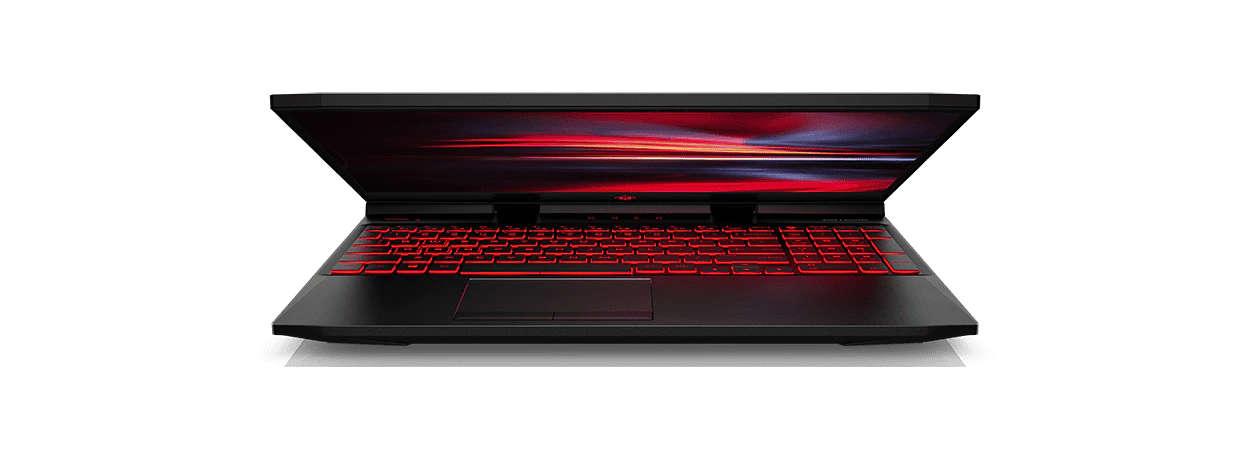Thank you for visiting the HONG KONG HP Store
-
Contact Us
CONTACT USChat with us
- Sales
- 85264507529(WhatsApp)
-

- Post Sales
- 85230016720(WhatsApp)
Mon-Fri 8.30am - 5.30pm
(exc. Public Holidays)
Live product demo
Store finder Locate our stores - Location
- My Account
Search
Anti-Aliasing Explained: Enhance Your Gaming Graphics Quality

Posted:
October 16, 2024
Categories:
Gaming

For gamers and tech enthusiasts in Hong Kong’s vibrant gaming scene, the quest for stunning visuals is never-ending. Whether you’re battling it out in the latest esports tournaments or exploring vast open worlds, one graphics setting can make a world of difference: anti-aliasing. Let’s dive into what anti-aliasing is, how it works, and why it’s crucial for gamers in Hong Kong looking to elevate their visual experience.
Contents
What is Anti-Aliasing?
Anti-aliasing is a technique used in computer graphics to smooth out jagged edges in digital images, particularly in games and 3D rendered environments. These jagged edges, often called “jaggies” or “the staircase effect,” occur when diagonal or curved lines are displayed on a pixel-based screen, impacting the overall image quality.
The primary goal of anti-aliasing is to create smoother, more realistic-looking images by blending the colors of pixels along the edges of objects. This process helps to eliminate the harsh, pixelated appearance that can occur in lower-resolution displays or when rendering complex 3D graphics.
Understanding Aliasing
To fully grasp anti-aliasing, it’s important to understand what aliasing is. In digital graphics, aliasing occurs because screens are made up of square pixels arranged in a grid. When trying to display a diagonal line or curve, the pixels can only approximate the shape, resulting in a jagged, stair-step appearance. This effect becomes more noticeable at lower resolutions or when viewing the image up close.
How Anti-Aliasing Works
Anti-aliasing works by sampling multiple points within each pixel and calculating an average color value. This process effectively blurs the edges of objects, creating the illusion of smoother lines. There are several methods of anti-aliasing, each with its own approach to achieving this smoothing effect.
The basic principle involves taking multiple samples of the color values around each pixel and then averaging them to determine the final color of that pixel. This averaging process helps to soften the transition between different colored areas, reducing the appearance of jagged edges.
Types of Anti-Aliasing
There are various anti-aliasing techniques, each with its own advantages and performance impacts. Here are some of the most common types:
-
Supersampling Anti-Aliasing (SSAA):
-
This method renders the image at a higher resolution and then downscales it to fit the display.
-
While it produces high-quality results, it’s also the most computationally intensive.
-
SSAA essentially creates a more detailed image and then compresses it, which can significantly smooth out edges.
-
-
Multisample Anti-Aliasing (MSAA):
-
MSAA samples only the edges of polygons, making it less demanding than SSAA while still providing good results.
-
It’s a popular choice for games as it offers a good balance between quality and performance.
-
MSAA works by taking multiple samples at the edges of geometry and then blending these samples.
-
-
Fast Approximate Anti-Aliasing (FXAA):
-
A post-processing technique that’s less resource-intensive but can sometimes result in a slightly blurrier image.
-
FXAA works by analyzing the rendered image and smoothing out high-contrast edges.
-
It’s very fast and can be applied to any image, making it popular in games that need to maintain high frame rates.
-
-
Temporal Anti-Aliasing (TAA):
-
This method uses information from previous frames to smooth out edges, providing good results with relatively low performance impact.
-
TAA can be particularly effective at reducing shimmer in moving images.
-
However, it can sometimes introduce a slight blur to the overall image.
-
-
Morphological Anti-Aliasing (MLAA):
-
Another post-processing technique that identifies edges in the final image and smooths them out.
-
MLAA can provide good results without the performance hit of more intensive methods.
-
It works by detecting edges in the image and then applying anti-aliasing only to those areas.
-
-
Enhanced Subpixel Morphological Anti-Aliasing (SMAA):
-
An advanced version of MLAA that provides higher quality results.
-
SMAA combines elements of MLAA with additional edge detection and blending techniques.
-
It aims to provide quality similar to MSAA but with better performance.
-
-
Coverage Sampling Anti-Aliasing (CSAA):
-
A spatial anti-aliasing method developed by GPU manufacturers.
-
CSAA improves image quality by effectively identifying and handling jagged edges in polygons.
-
It requires less processing power compared to traditional methods.
-
-
Enhanced Quality Anti-Aliasing (EQAA):
-
An advanced spatial anti-aliasing technique developed by GPU manufacturers.
-
EQAA improves image quality by detecting jagged edges in polygons and applying supersampling selectively.
- It requires less processing power compared to traditional methods.
-
Benefits of Anti-Aliasing in Gaming and Graphics
Anti-aliasing can significantly enhance your visual experience in several ways:
-
Improved visual quality:
-
By smoothing out jagged edges, anti-aliasing creates more realistic and visually appealing graphics.
-
It can make game worlds appear more cohesive and less “digital-looking.”
-
Adjusting anti-aliasing settings can further enhance visual quality by allowing users to choose the best technique for their system and preferences.
-
-
Reduced eye strain:
-
Smoother edges can make the game easier on the eyes, especially during extended gaming sessions.
-
This can be particularly noticeable in games with lots of fine details or complex environments.
-
-
Better immersion:
-
With fewer visual artifacts, you can become more immersed in the game world or 3D environment.
-
Smoother graphics can help maintain the illusion of a continuous, realistic world.
-
-
Enhanced detail perception:
-
Anti-aliasing can help reveal fine details that might otherwise be lost in a pixelated mess.
-
This is especially important in games or applications where visual fidelity is crucial.
-
-
Improved text readability:
-
Anti-aliasing can make text appear smoother and more legible, especially at smaller sizes.
-
This is beneficial not just in games, but in all applications where text is displayed.
-
-
Consistent visual quality across different resolutions:
-
Anti-aliasing can help maintain visual quality even on lower resolution displays.
-
This makes games and applications look better across a wider range of devices.
-
Performance Considerations
While anti-aliasing can greatly improve visual quality, it often comes at the cost of performance. More advanced anti-aliasing techniques require more processing power, which can lead to lower frame rates. It’s important to find a balance between visual quality and performance that works for your system and preferences.
The Future of Anti-Aliasing
As display technologies advance, the role of anti-aliasing continues to evolve:
-
Higher resolution displays: As 4K and even 8K displays become more common, the need for traditional anti-aliasing may decrease.
-
AI-enhanced techniques: Machine learning is being applied to create more efficient and effective anti-aliasing methods.
-
Integration with other technologies: Anti-aliasing is being combined with other graphics technologies like supersampling and dynamic resolution scaling for even better results.
Anti-Aliasing and Hong Kong’s Gaming Culture
Hong Kong’s gaming scene is known for its competitive edge and appreciation for high-quality visuals. With popular esports titles like League of Legends and Overwatch dominating the local gaming landscape, the importance of crisp, clear graphics cannot be overstated. Anti-aliasing plays a crucial role in ensuring that gamers can spot enemies quickly and accurately, without being distracted by jagged edges or visual artifacts.
Moreover, Hong Kong’s dense urban environment often means that gamers are playing on a variety of screen sizes and resolutions. Anti-aliasing helps maintain consistent visual quality across different setups, from large gaming monitors to smaller laptop screens. This is particularly relevant for the many cyber cafes and gaming centers scattered throughout the city, where players expect a high-quality visual experience regardless of the specific hardware they’re using.
Best HP Gaming Laptops for Smooth Anti-Aliasing in Hong Kong
Best High-Performance Gaming Laptop for Anti-Aliasing


The HP OMEN 16.1 inch Gaming Laptop 16-wf1031TX is a powerhouse designed to handle the most demanding anti-aliasing techniques with ease. Its high-end specifications make it perfect for gamers who want the best visual quality without compromising on performance.
-
16.1" diagonal QHD IPS display with 240 Hz Refresh Rate
-
NVIDIA® GeForce RTX™ 4070 Laptop GPU (8 GB GDDR6 dedicated)
-
Intel® Core™ i9-14900HX processor
-
32 GB memory and 2 TB SSD storage
With its powerful GPU and high-refresh-rate QHD display, this laptop can easily handle intensive anti-aliasing methods like MSAA or even SSAA in many games, providing ultra-smooth edges and incredible detail. The large screen and high resolution also naturally reduce the visibility of jagged edges, complementing the anti-aliasing techniques for an unparalleled visual experience.
Best Mid-Range Gaming Laptop for Balanced Anti-Aliasing Performance


For gamers looking for a great balance between performance and price, the HP Victus 16 inch Gaming Laptop 16-r1061TX offers excellent anti-aliasing capabilities without breaking the bank.
-
16.1" diagonal FHD display
-
NVIDIA® GeForce RTX™ 4050 Laptop GPU (6 GB GDDR6 dedicated)
-
Intel® Core™ i5-14500HX processor
-
16 GB memory and 1 TB SSD storage
This laptop’s RTX 4050 GPU is capable of handling modern anti-aliasing techniques like FXAA and TAA with ease, providing smooth edges and clear visuals in most games. The FHD display strikes a good balance, allowing for effective anti-aliasing without the extreme performance demands of higher resolutions.
Conclusion
Anti-aliasing is a powerful tool in the world of computer graphics, especially for gamers and graphics professionals in Hong Kong’s competitive and visually-driven gaming culture. By smoothing out jagged edges and creating more visually appealing images, it can significantly enhance your gaming experience. However, it’s important to consider the performance impact and choose the right anti-aliasing method for your system and preferences.
As display technologies continue to advance, the need for traditional anti-aliasing may decrease with higher resolution screens. However, it remains an important technique for optimizing visual quality across a wide range of devices and display types. New forms of anti-aliasing, potentially enhanced by AI and machine learning, may also emerge to tackle the challenges of increasingly complex graphics.
Whether you’re a casual gamer, a competitive esports player, or a graphics enthusiast in Hong Kong, understanding anti-aliasing can help you make informed decisions about your graphics settings and get the most out of your visual experiences. By balancing performance with visual quality, you can create or enjoy smoother, more realistic digital imagery that pushes the boundaries of what’s possible in computer graphics.
For those looking to upgrade their gaming setup to take full advantage of advanced anti-aliasing techniques, consider exploring HP’s range of gaming laptops and gaming desktops. With powerful GPUs and high-quality displays, these machines are designed to deliver the smooth, immersive gaming experience that Hong Kong’s discerning gamers demand.
CONTACT US
Chat with us
- Sales
- 85264507529(WhatsApp)
-

- Post Sales
- 85230016720(WhatsApp)
Mon-Fri 8.30am - 5.30pm
(exc. Public Holidays)
Live product demo
Store finder
Locate our stores








